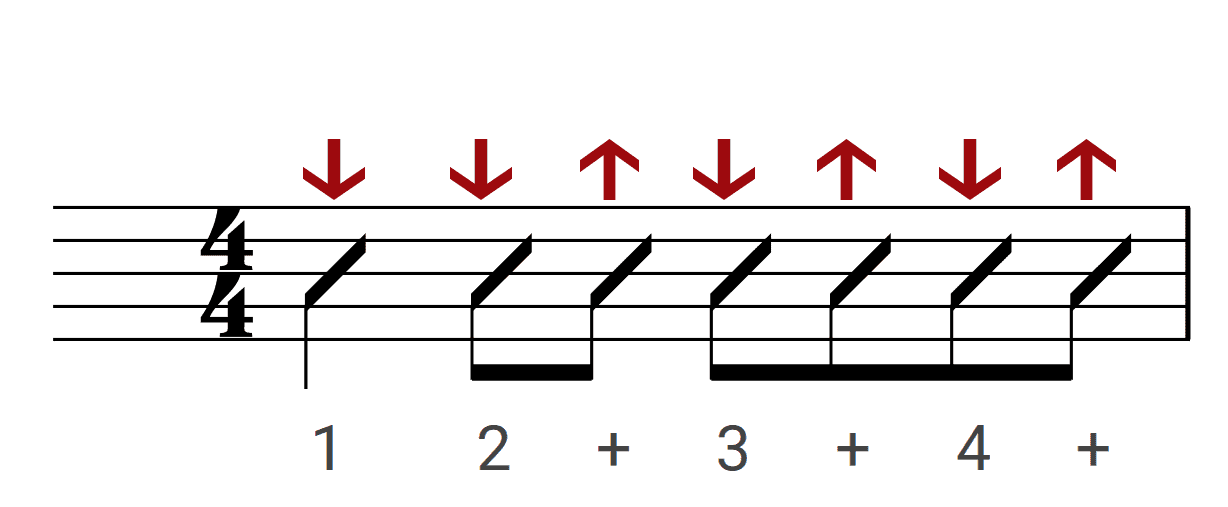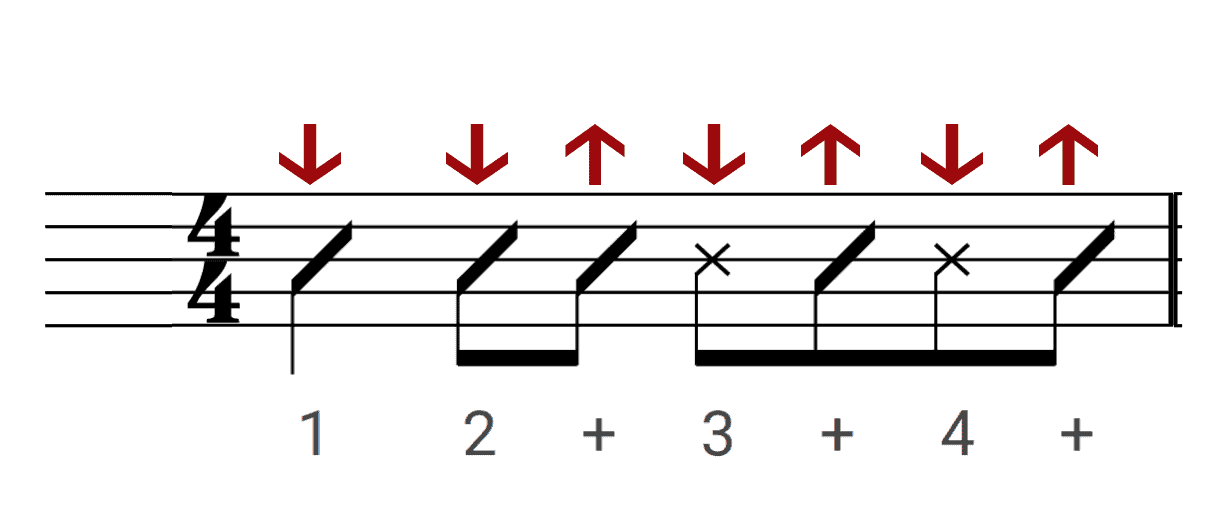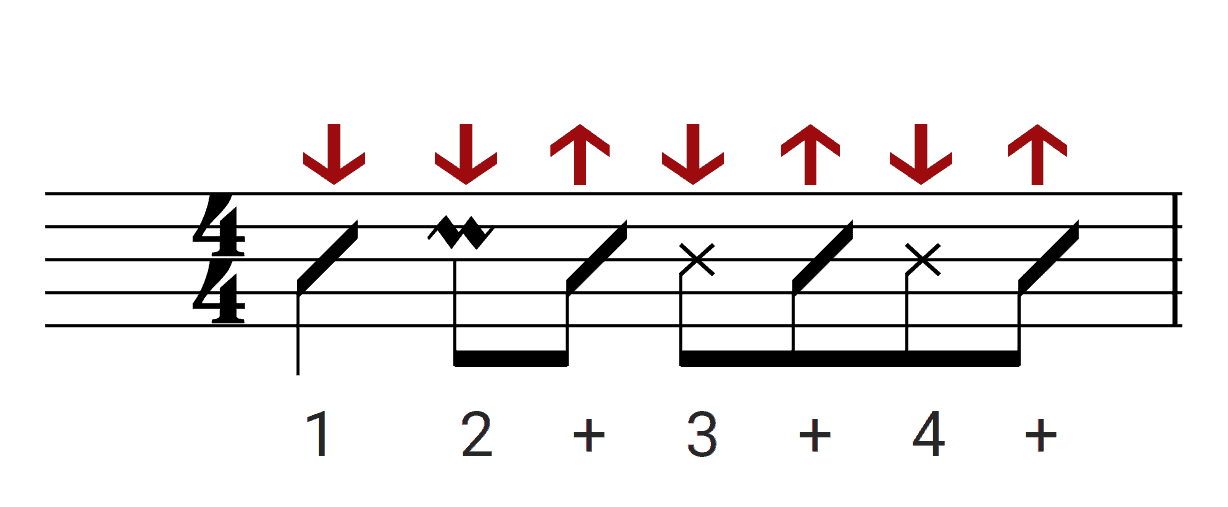Today we’re going to look at one of my favorite strums! The island strum adds color to some songs and it is a great tool to have at your disposal. I like to use this particular strum on specific songs that have an island feel or Latin beat. For instance, I use it on the song I Can See Clearly Now by Jimmy Cliff. Let’s break down this strum step by step.
Chords
To break down this strum we’re going to use two chords: G and C. I’m using a four-finger G with the index on the fifth string second fret, middle finger on the sixth string third fret, ring finger on the second string third fret, and pinky on the first string third fret. You can use a regular G if you wish.
However, if you do the four-finger G, then it’s easier to move the C chord which adds a 9th. From the four-finger G, simply move the index and middle finger down one string. Again, you can use a normal C if you prefer.
Basic Motion
We’re going to use a pendulum motion of just down-up with your right hand. On some of those arm movements, we’re going to strum and on others, we’re not going to. The basic pattern is D-DU-DU-DU. Remember that we keep moving the arm in a constant up and down motion throughout.

Practice it a few times until you feel comfortable. Stay on just the G chord at first to simplify things. Make sure you have that pattern down before moving on.
Palm Mute
Now we’re going to add a palm mute to the previous strumming pattern. When you strum, place your right hand and palm the strings while you strum down. To practice that, place your left hand over the strings, without a chord. You do the muting with your hand right next to the bridge.
Here’s a fun exercise to try: do a mute down and pluck the chord on the way up. This itself actually is a strum, just like the one used on “Ob-la-di Ob-la-da” by The Beatles.
Make sure you master this mute part, as it is a very useful and common technique for strumming on the guitar.
Incorporating the Mute
We will keep the D-DU-DU-DU pattern but with the last two Ds muted. That means you mute on the downbeat of beats 3 and 4. Try it really slow at first to really make sure you’re doing it right. Once you can do one, try doing two in a row, slow. You can increase the speed as you feel more comfortable. This is also a strum and a very useful one at that. I call it a double-mute strum and it is quite common for rock and pop.

Adding A Rake
A rake is done by strumming the strings in a slower fashion, like in a raking sound. You place your pick on the low string and start the strum just a bit before the beat so you can slow down the strum and make it a rake. Let’s practice a rake with a DU to incorporate this new aspect. Once you have that, try doing two in a row.
The Island Guitar Strum
Now we’re going to incorporate the mutes and rake to complete the island strum. It is D-RU-MU-MU. In other words, the rake happens on the downbeat of beat 2, while the mutes stay on beats 3 and 4.

Conclusion
We’ve broken down the Island Strum Guitar into several manageable parts. You can take your time with each of these parts, from the up and down strum to the mute and all the way to the rake, and finally putting them all together. And once you have it, it will be second nature and will add a lot of spice to your strumming.
Add To Pinterest:


